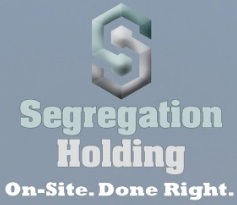Tax time is almost over…at least for Round 1! For those who own commercial buildings or residential rental property and you just wrote a big check to pay your federal income taxes, above what you’ve already contributed in your quarterlies…are you tired of it? Did you think that “this year, finally, I paid enough extra each quarter so I wouldn’t have to write another check come April 15?”
Good news! You are sitting in a major source of a tax refund, perhaps, or at least major mitigation of your tax burden. By way of example, let me share what I mean. Your building was purchased by you in 2005 for $500,000 and you renovated substantially for another $500,000 in the same year. Now you have invested $1,000,000 in your building. By the way, for the purposes of this example, you are a dentist!
As an aside…more than likely your CPA set your facility up on a 39-year straight line (SL) method of depreciation. It is the easiest method so most do. Now, since you don’t want to repeat what you just had to do for April 15, 2011, you enlist an engineering firm to perform a Cost Segregation Study on your property. In layman’s terms that means we would look at your building’s components and segregate them according to their purpose and intended use and then assign them a category or “classification” that meets the IRS guidelines for proper depreciation using MACRS (Modified Accelerated Cost Recovery System). MACRS is the required method of depreciation a commercial property owner (or residential rental property) is supposed to employ when setting up your depreciation schedule. Don’t fault your CPA or accountant for not doing so; they are not qualified as engineering or architectural professionals the IRS recommends to perform such re-classification.
Back to the example…you have a million dollar facility and you engage an engineer versed in cost segregation techniques to re-classify your building’s components. A typical dental facility will have approximately 25% to 35% of their building re-classified as personal property that meets the 5-year depreciation qualification and 10% to 15% re-classified as personal property that meets the 15-year depreciation qualification. So, that means a range of 35% to 50% of the typical dental office will have accelerated depreciation of $350,000 to $500,000 moved into the short-lived category of personal property. Financially, here is what that means…you have an additional $250,000 depreciated over the first five years of your building’s life and $100,000 depreciated over the first fifteen years. If you are in the 35% federal income tax bracket you would see an accelerated “after-tax” benefit of $122,500. However, in our example you purchased the property in 2005…that means you have already “earned” the accelerated depreciation on your property!
How do you get it? Simple! We file an IRS Form 3115 with the IRS requesting a change in the method of depreciation from straight-line to MACRS. When this Form 3115 is submitted with a cost segregation study we have performed during any time of the year, it is automatically accepted without prejudice and admitted as factually accurate. In our example, within 30 days, you would then receive a tax credit of $122,500 against any tax debt owed or pending tax liabilities going forward. If you are current on your federal income taxes you can request a tax REFUND and get a check FROM the IRS!
Would you like to know more…just complete the “contact us” information on-site and we will contact you very soon thereafter. We provide a FREE analysis of your property so you can determine if it makes sense financially for you to have a cost segregation study performed on your property.


